Photoshop layer styles are a popular way to add effects, such as drop shadows and strokes, to layers in a non-destructive way. With the right knowledge and experience, any effect can be achieved. To achieve these effects, however, you need to understand what each setting does and how they can be combined to achieve a certain look. In this series by John Shaver from Design Panoply, we will explain every aspect of Photoshop’s layer styles feature and show you how to unlock their potential.
In this article, Part 3: Photoshop Layer Styles Inner Shadow, we will explain the settings behind the Inner Shadow and how it can be used. Let’s take a look!
The Uses for an Inner Shadow
The traditional use for an inner shadow is to simulate 3D depth in a 2D image. This is done by creating an offset shadow within a shape to make it look like it is cut out and casting a shadow on the object beneath it.
Below you will see an example of how an inner shadow can indicate how big the light source is and where it is coming from, as well as how far away an object is from the background. By changing only the settings of the inner shadow, you can dramatically change the look of an image.
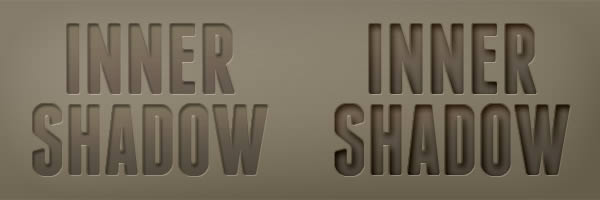
The Layer Styles Inner Shadow Dialog Box
The Inner Shadow dialog box is shown below. The settings are nearly identical to the Drop Shadow dialog box, the only difference is instead of the shadow showing up behind the shape, it shows up within the shape.
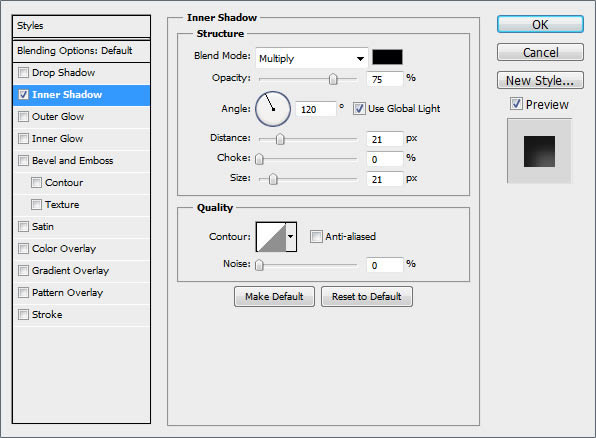
Blend Mode
The Blend Mode allows you to set the blending mode for your shadow. Typically you will want this to be Multiply or Linear Burn, so that your shadow darkens the layer that is behind it.
If you are unfamiliar with how all the different Blending Modes work, I highly recommend checking out the Blending Is Fun Basix tutorial.
This is also where you set the color of your shadow by clicking the color block next to the Blend Mode dropdown menu. By default, the shadow color will be black, but you can add a tint of color or even try something outrageous to get special effects.
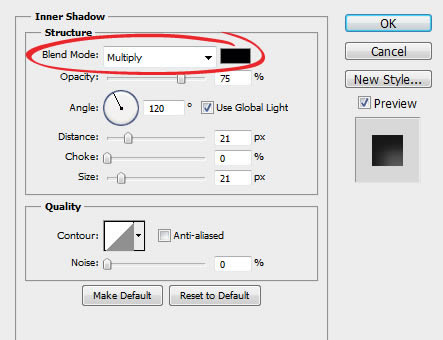
In the following example, you can see that the color of the shadow on the left is black with a Blend Mode of Multiply, while the color of the shadow on the right is a dark purple color with a Blend Mode of Normal. This creates the result you see below.
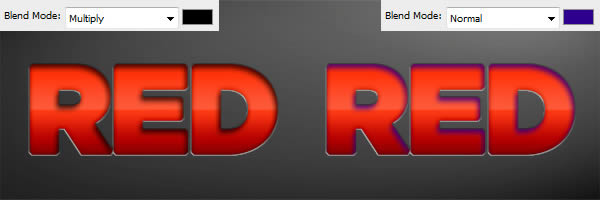
Opacity
The Opacity slider allows you to specify how transparent your shadow will be. A setting of 0% is completely see through while 100% is completely opaque.
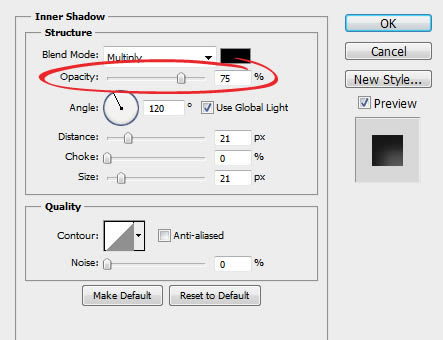
In the following example, you can see that the shadow on the left adds a subtle hint of depth to the text while the shadow on the right is more visible and adds even more depth.
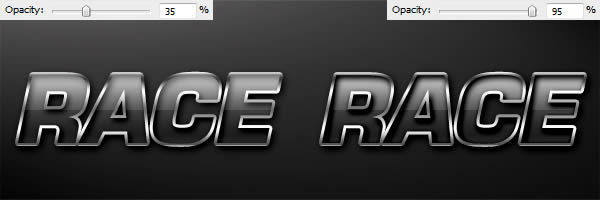
Angle
The Angle spinner and corresponding box allow you to change the apparent angle that the light source comes from. By turning the "Use Global Light" checkbox on, any changes you make to the angle of the Inner Shadow will also change the angle of the light sources used in other effects like Bevel and Emboss and Drop Shadow. By leaving it unchecked, you can change the light angle for the Inner Shadow independently of other effects.
The recommended setting is "checked" for most cases, because we want to have a uniform light source for the most cohesive looking effect.
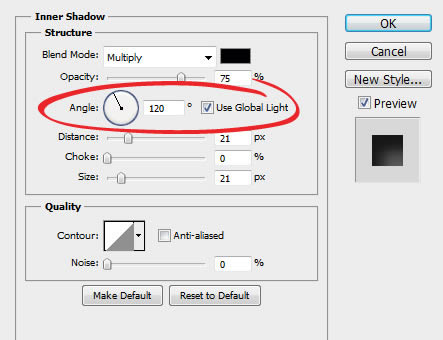
In the following example, changing the angle of the light source changes the way in which the shadow falls, and since "Use Global Light" is checked, it also changed the light angle for the Drop Shadow and Bevel and Emboss effects as well.
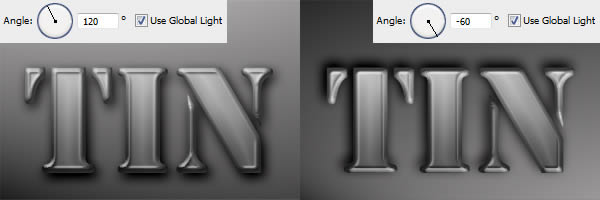
Distance
The Distance slider changes the apparent distance between the subject and the background. The effect is achieved by altering the offset between the subject and the Inner Shadow itself.
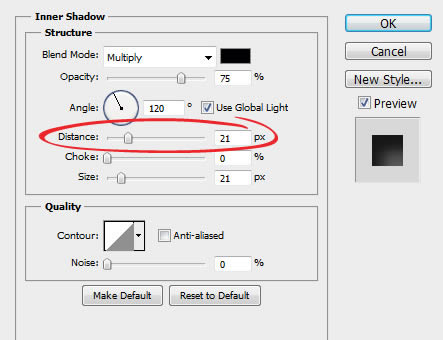
In the following example, increasing the distance gives the effect that the text on the left is simply indented in the cardboard while the text on the right is a completely separate piece hovering above the background.
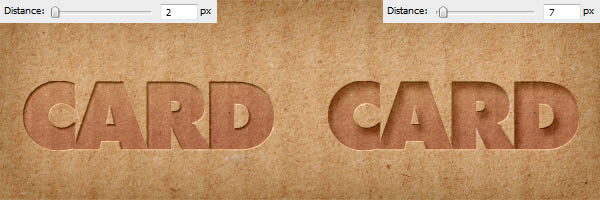
Choke
The Choke slider changes the falloff of the shadow in a linear fashion, or in other words, how gradually it fades out at the edges.
For a typical Inner Shadow, you will normally want to leave this at 0%, but for harder shadows you should increase it, and for shadows with hard edges or even inner strokes and faux highlights you can set it all the way to 100%.
Adjusting the choke is almost the same as changing the size to 0px and then altering the distance. It basically achieves the same effect in a different way.
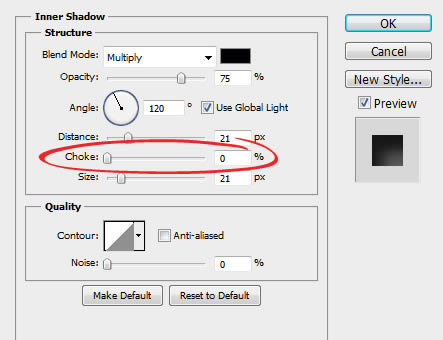
In the following example, increasing the choke percentage to 100% changes the falloff of the shadow so that it has a hard edge.
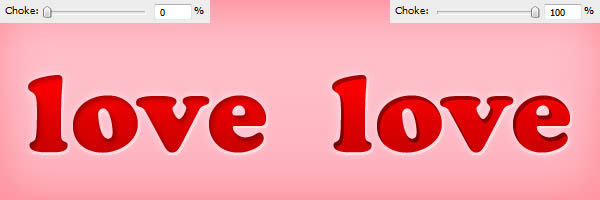
Size
The Size slider changes the apparent size of the light source by softening the edges of the shadow. When it is set to 0, the shadow is exactly the same size as the shape of the object. As you increase the size, the shadow grows in 1 pixel increments.
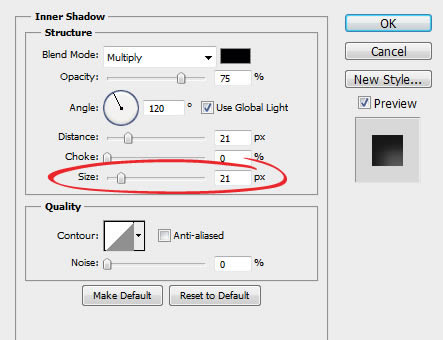
In the following example, increasing the size of the shadow gives us flexibility over controlling not only the overall size of the shadow, but the softness of it as well.
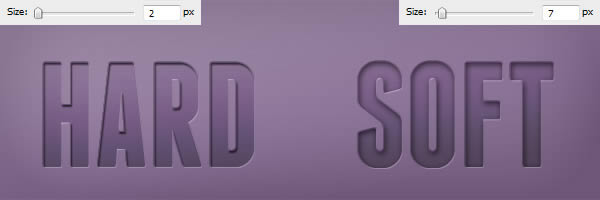
Contour
The Contour shapes allow you to change the falloff of the shadow in a non linear fashion. By choosing different curve profiles, you can get the shadow to fade out in different ways.
The only time this is really useful is when you are trying to achieve special glow or abstract effects.
In addition, the "Anti-aliased" checkbox allows you to improve the quality of the shadow with a very slight drop in performance. The performance hit is negligible, so we recommend always keeping the box checked.

In the following example, changing the Contour shape to an inverted "U" results in shadow with a tiny gap between the edge of the shape and where the shadow starts. This is typically not a desirable effect.
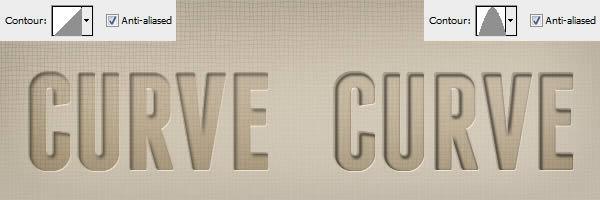
Noise
The Noise slider is a useful tool to give your shadow a gritty feel. If you are creating a style that is going to resemble dirt or concrete, adding some noise can help the overall effect. For a totally smooth shadow, leave it at 0%.
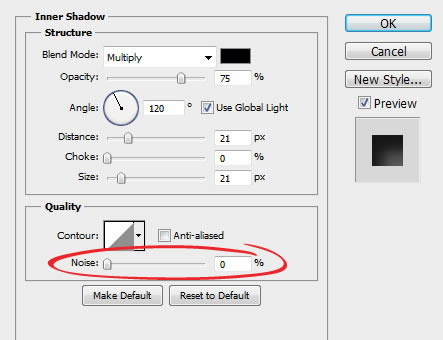
In the following example, setting the noise to 30% gives us just a little grit in the shadow. A good range to use is 0%-30%, as going higher than 30% can often result in a very unnatural look.
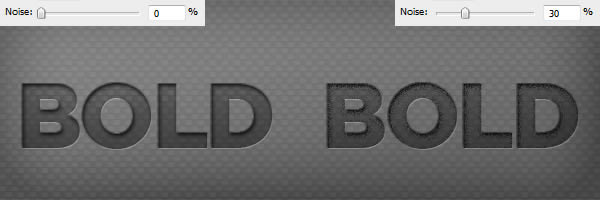
Saving and Loading Default Settings
You can save and load default settings for each effect in the Layer Styles dialog box. By clicking "Make Default", Photoshop will store whatever settings are currently active as the new default settings for that effect.
By clicking "Reset to Default", Photoshop will then load whatever settings were last saved. This allows you to experiment and simply reload custom default settings if you want to start over.

One for the Road
Until next time, this free, exclusive layer style and accompanying .PSD will quench your letterpress thirst and allow you to experiment with your own Inner Shadow settings.
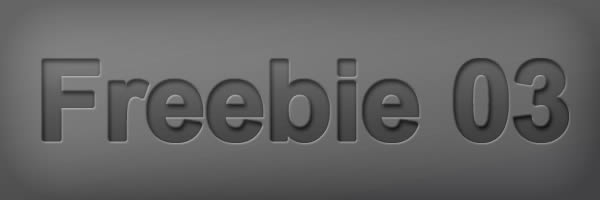
{excerpt}
Read More